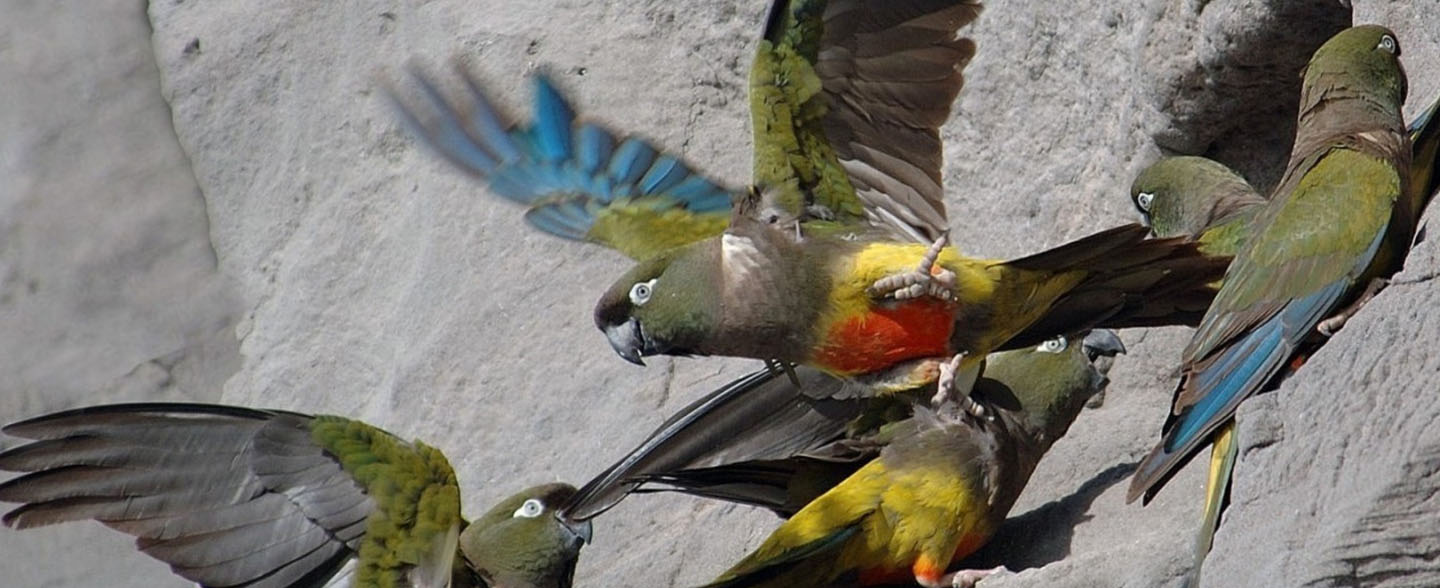
Burrowing Parrot
Usually found in pairs that gather to form flocks, the burrowing parrot breeds in colonies in cliff faces, each pair digging a tunnel that ends in a nesting chamber. The colony at El Cóndor, on the coast of Patagonia in the province of Río Negro, Argentina, is the largest colony of all species of parrots in the world.
Challenges
Burrowing parrots are threatened by loss of habitat to agriculture in several parts of their range. Also, pesticides cause growth defects in the birds. Disturbance of breeding colonies by people can affect breeding success.
Our work
We work to achieve formal protection for the burrowing parrot colony of El Cóndor and the conservation of the inland Monte habitat that is important for the survival of the birds that breed here.
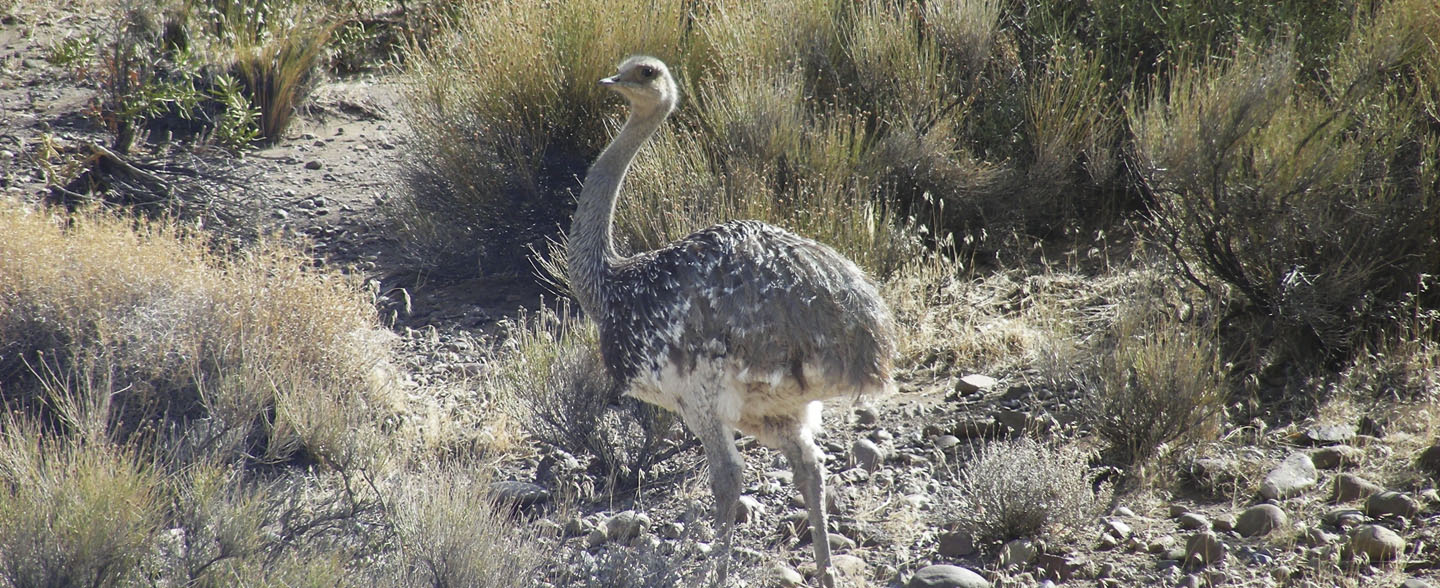
Darwin's Rhea
The Darwin’s rhea is a large-bodied, flightless bird—the second largest herbivore, after the guanaco, in the Patagonian and Southern Andean Steppe. Father rheas tend the nest where several different females have laid their eggs, and raise the young flocks of up to 25 chicks. Darwin’s rheas have declined dramatically in many areas.
Challenges
Potential causes for the decline of the Darwin’s rhea are competition with livestock for food and water, hunting and collection of eggs, and increased predation and egg consumption by native predators. These large birds have large home ranges, and virtually no protected area in Argentina is large enough to harbor a demographically viable population. The species is in such low densities in many areas that it no longer serves as a major prey for native carnivores.
Our work
We work to expand and improve management of protected areas throughout Patagonia, to secure habitat and refuge from hunting for Darwin’s rheas. Beyond protected areas, we work with livestock producers to help them obtain certification for their products if they commit to not kill rheas and other wildlife nor collect their eggs. We also develop methods to monitor populations over large landscapes.
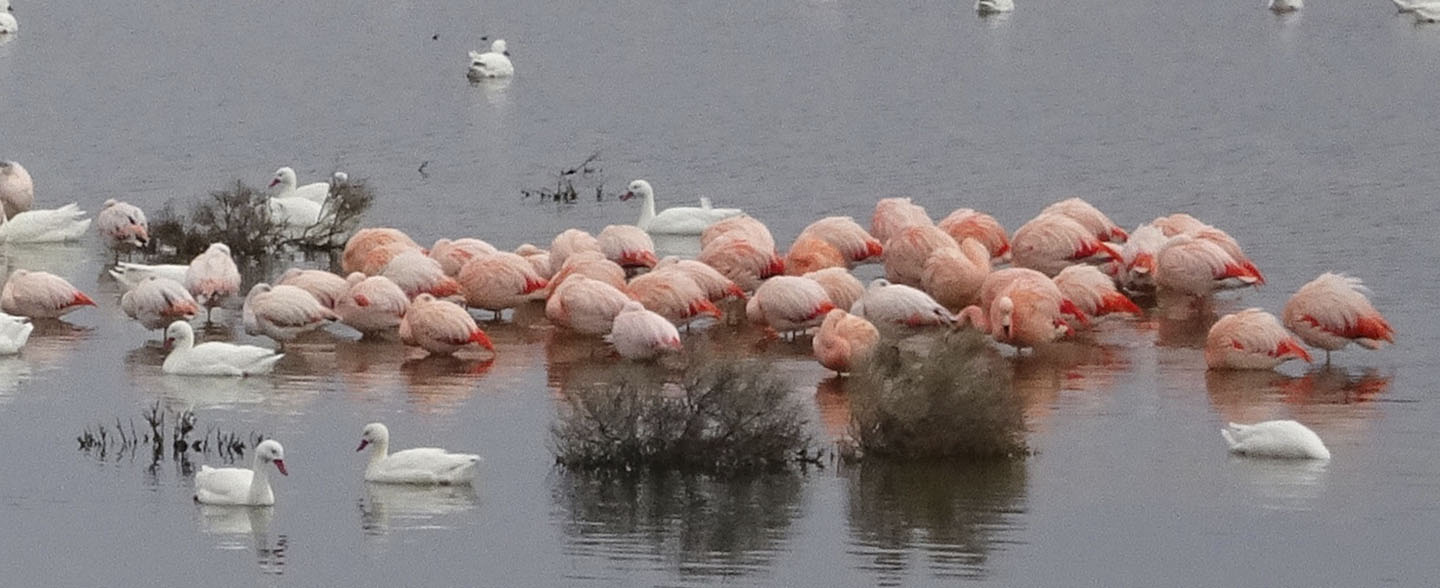
Flamingo
Of the six species of flamingo in the world, four are restricted to the Americas, and of these, three occur in South America. Two species live in salt flats and freshwater lakes of the Andes in Peru, Bolivia, Chile and Argentina. All of the South American species are of conservation concern.
Challenges
Destruction of habitat by large mining operations and use of freshwater for towns and cities from high Andean lakes are the most serious threats to flamingos in the high Andes. Disturbance of breeding colonies by people, domestic animals, gulls, and introduced invasive species such as the European boar are also severe threats to all three species.
Our work
To ensure healthy populations of all three species of flamingo in southern South America, we monitor breeding colonies and evaluate their threats. We also work with governments to promote the creation and strengthening of protected areas in key lagoons, and we help to raise awareness of the threats that these unique and spectacular bird species face.
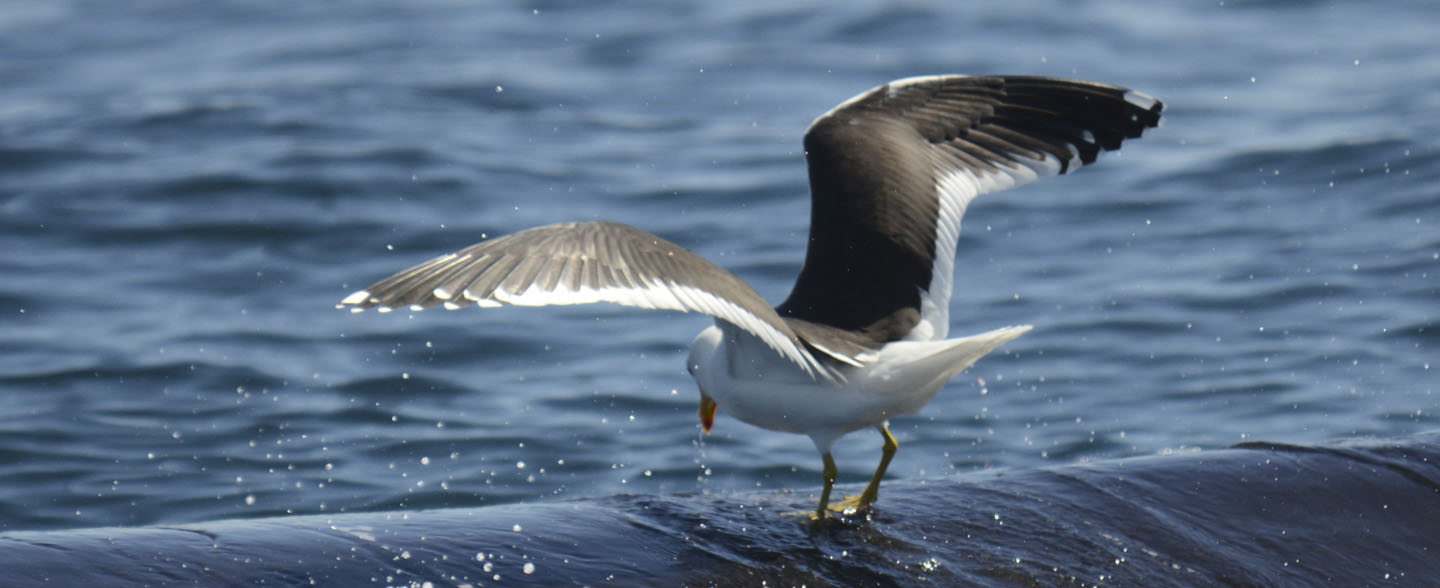
Gulls and Terns
Three species of gulls and four species of terns are regular breeders on the coast of Patagonia. The most abundant gull is the kelp gull, which is widely distributed throughout the region and has shown large increases in population numbers, resulting in conflicts with humans and other coastal wildlife. Olrog’s gull, on the other hand, is relatively rare and breeds in a handful of small colonies on the southern shore of the Province of Buenos Aires and Golfo San Jorge in Chubut. This is the only threatened gull breeding in the Southern Cone. The dolphin gull breeds in compact colonies usually associated with breeding colonies of marine birds and mammals, as they take advantage of food scraps dropped when birds feed their offspring and of sea lion excrements. The South American tern is the most abundant species of tern and forms large breeding colonies onshore, often numbering several thousand pairs. Royal and cayenne terns often breed in small compact colonies with their nests intermingled, reaching 10 nests per square meter. The gull-billed tern nests at only a few locations in the northern coasts of Patagonia.
Challenges
Olrog’s gull has a limited range and specialized feeding behaviors that make it vulnerable to coastal habitat degradation and pollution. Human disturbance of breeding colonies is also a concern. All tern species are vulnerable to fishing activities that reduce food supply, and are highly sensitive to disturbance of their breeding colonies.
Our work
We monitor populations of gulls and terns on the coast, contributing to the spatial planning of marine protected areas and to the reduction of conflicts with human activities, particularly in relation to the threatened Olrog’s gull. In addition, we provide information that is employed by government authorities to manage fisheries and urban waste in Patagonia. We also collaborate providing management recommendations to reduce negative interactions between gulls and terns and other species.
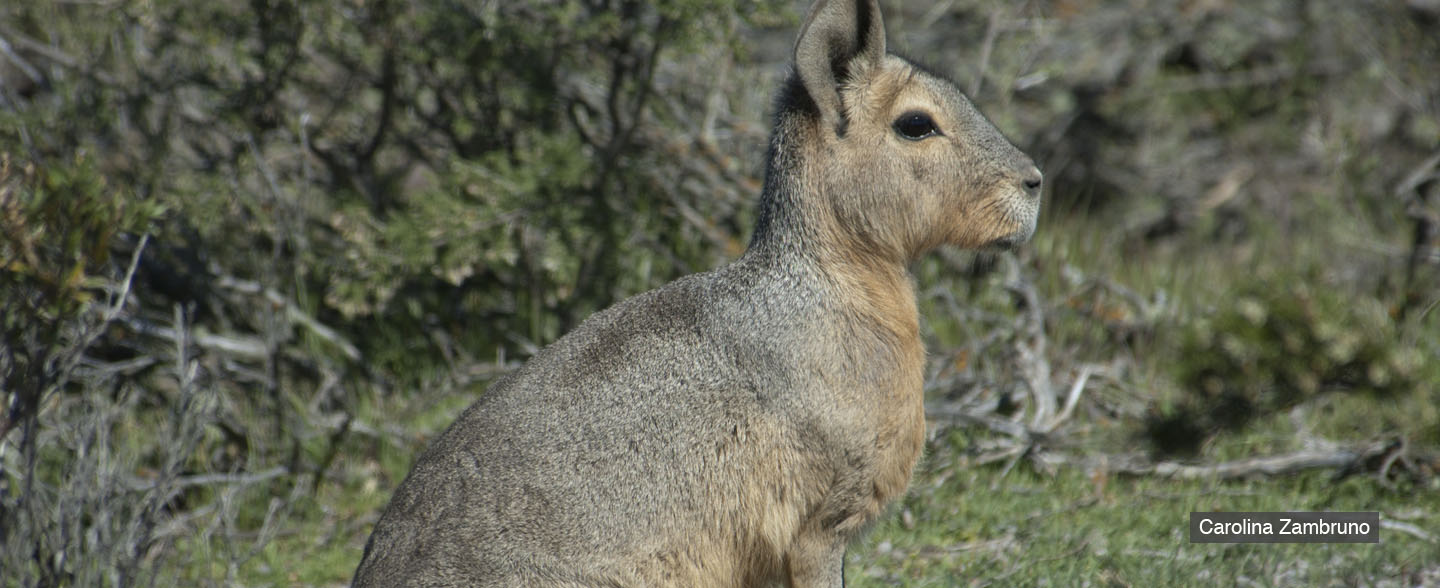 Mara
Mara
The mara, or Patagonian cavy, is a large rodent related to the guinea pig, but it looks more like a small deer or antelope. Unique to the arid areas of Argentina, Patagonian cavies are monogamous, forming pairs that endure until the death of one of the partners. For protection from predators, they often form communal dens, where pups of up to 20 or more pairs are kept together.
Challenges
Sheep, goats, and the introduced European hare have overgrazed their habitat, compete with them for food, and expose them to diseases and parasites. Maras are also hunted by humans and harassed and killed by their dogs, and appear to have declined by 30% in some Patagonian sites over the last ten years.
Our work
Maras benefit from our work with livestock producers to improve habitat, help them obtain increased income from smaller, healthier herds, and to reduce hunting.